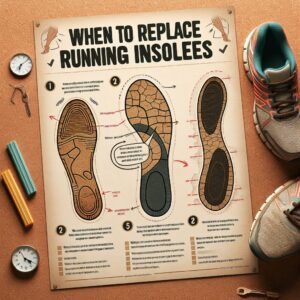
Unlock Peak Performance: The Best Insoles for Snowboard Boots
-
Table of Contents
Unlock Peak Performance: The Best Insoles for Snowboard Boots is an informative guide that provides an in-depth analysis of the top insoles designed specifically for snowboard boots. It aims to help snowboarders enhance their performance and comfort on the slopes by choosing the right insoles. The guide discusses various factors to consider when purchasing insoles, including material, design, and fit. It also reviews some of the best brands and models available in the market, offering readers valuable insights to make an informed decision.
Why Insoles Matter in Snowboard Boots
Unlocking peak performance in snowboarding is not solely dependent on the quality of the snowboard or the skill of the rider. An often overlooked, yet crucial component of the snowboarding gear is the insole of the snowboard boot. The right insole can significantly enhance the rider’s performance, comfort, and overall snowboarding experience.
Insoles play a pivotal role in snowboard boots for several reasons. Firstly, they provide the necessary support to the foot, particularly the arch and heel. This support is crucial in snowboarding, a sport that demands a lot of footwork and balance. Without proper support, the foot can become fatigued, leading to decreased performance and increased risk of injury.
Secondly, insoles help in shock absorption. Snowboarding involves a lot of jumping and landing, which can put a lot of pressure on the feet. The right insole can absorb this shock, reducing the impact on the feet and the rest of the body. This not only enhances performance by allowing smoother landings but also increases comfort, enabling the rider to snowboard for longer periods without discomfort or pain.
Thirdly, insoles contribute to the overall fit of the snowboard boot. A well-fitted boot is essential for optimal control and responsiveness on the snowboard. Insoles can fill in any extra space in the boot, ensuring a snug fit. This prevents the foot from moving around in the boot, which can cause blisters and other discomforts. Moreover, a well-fitted boot allows for better transfer of energy from the rider to the snowboard, leading to more precise control and improved performance.
However, it’s important to note that not all insoles are created equal. The best insoles for snowboard boots are those that are specifically designed for the sport. These insoles typically have a stiffer design to provide the necessary support and shock absorption for snowboarding. They also have a heat-moldable feature, which allows the insole to conform to the shape of the rider’s foot, ensuring a perfect fit.
In addition to these features, the best insoles for snowboard boots also have moisture-wicking properties. This is important as snowboarding can cause the feet to sweat, which can lead to discomfort and even frostbite in colder conditions. Moisture-wicking insoles help to keep the feet dry, enhancing comfort and preventing potential issues.
In conclusion, insoles play a significant role in snowboard boots, contributing to support, shock absorption, fit, and comfort. The best insoles for snowboard boots are those specifically designed for the sport, with features such as a stiffer design, heat-moldability, and moisture-wicking properties. By investing in the right insoles, snowboarders can unlock their peak performance, enhancing their control, precision, and overall snowboarding experience. Therefore, when gearing up for snowboarding, don’t overlook the importance of the insoles in your boots. They could be the key to your best performance yet.
Who Needs Insoles for Snowboard Boots
Snowboarding is a thrilling sport that requires not only skill and balance but also the right gear. Among the essential equipment for snowboarding, boots play a pivotal role in ensuring comfort and performance. However, even the best snowboard boots may not provide the necessary support for your feet, especially during long hours on the slopes. This is where insoles for snowboard boots come into play.
Insoles are designed to provide additional support and comfort to your feet, enhancing your overall snowboarding experience. They are particularly beneficial for individuals who spend long hours on the slopes, as they help to reduce foot fatigue and discomfort. But who exactly needs insoles for snowboard boots?
Firstly, individuals with specific foot conditions such as flat feet, high arches, or plantar fasciitis can greatly benefit from using insoles. These conditions can cause discomfort and pain, especially when snowboarding. Insoles can provide the necessary arch support, cushioning, and shock absorption, reducing the impact on the feet and alleviating pain.
Secondly, professional snowboarders or those who snowboard frequently may find insoles beneficial. Snowboarding is a high-impact sport that puts a lot of pressure on the feet. Over time, this can lead to foot fatigue, discomfort, and even injuries. Insoles can help to distribute the pressure evenly across the foot, reducing the risk of injury and enhancing performance.
Thirdly, insoles can be beneficial for individuals who have boots that do not fit perfectly. A good fit is crucial for comfort and performance when snowboarding. However, finding the perfect fit can be challenging. Insoles can help to fill in the gaps and provide a better fit, enhancing comfort and stability.
Lastly, insoles can be beneficial for individuals who are looking to enhance their performance. Insoles can improve foot alignment, which can enhance balance and stability, crucial factors in snowboarding. Moreover, they can provide additional cushioning and shock absorption, reducing foot fatigue and allowing you to snowboard for longer periods.
In conclusion, insoles for snowboard boots can be beneficial for a wide range of individuals. Whether you have a specific foot condition, snowboard frequently, have boots that do not fit perfectly, or are looking to enhance your performance, insoles can provide the additional support and comfort you need. However, it is important to note that not all insoles are created equal. The best insoles for snowboard boots are those that provide the right amount of support and cushioning, fit well in your boots, and are made of durable materials. Therefore, it is crucial to do your research and choose the right insoles for your specific needs and preferences. Unlock your peak performance with the best insoles for your snowboard boots.
The Impact of Insoles on Snowboarding Experience
Unlocking peak performance in snowboarding is not solely dependent on the quality of the snowboard or the skill of the rider. An often overlooked but crucial component of the snowboarding gear is the insole of the snowboard boot. The right insole can significantly enhance the snowboarding experience, providing comfort, stability, and improved control over the board.
Insoles, also known as footbeds, are designed to provide support to the foot’s arch and align the foot in a neutral position, promoting better posture and balance. When snowboarding, this alignment is critical as it allows for more precise control and maneuverability of the board. The foot’s position in the boot can directly impact the rider’s ability to steer and stabilize the board, especially at high speeds or during complex tricks. Therefore, the right insole can enhance the rider’s performance by providing the necessary support and alignment.
Moreover, insoles can significantly improve the comfort of snowboard boots. Snowboarding often involves long hours on the slopes, and uncomfortable boots can quickly lead to foot fatigue, pain, and even injuries. High-quality insoles can alleviate these issues by offering cushioning and reducing pressure on the foot. They can also help prevent common snowboarding ailments such as shin splints and plantar fasciitis, which are often caused by inadequate foot support.
In addition to comfort and support, insoles can also provide better insulation in the boots. This is particularly important in snowboarding, where the feet are constantly exposed to cold temperatures. Insoles made from materials like wool or thermal foam can help retain heat and keep the feet warm, enhancing the overall snowboarding experience.
However, it’s important to note that not all insoles are created equal. The best insoles for snowboard boots are those that are specifically designed for the sport. These insoles typically have a stiffer design to provide the necessary support for snowboarding’s dynamic movements. They also have a deeper heel cup to stabilize the foot and prevent it from sliding inside the boot.
When choosing an insole, it’s crucial to consider the individual’s foot shape and arch type. Some people have high arches, some have low arches, and others have neutral or medium arches. Different insoles are designed to cater to these different arch types, so it’s essential to choose an insole that matches the individual’s foot shape to ensure maximum comfort and support.
In conclusion, insoles play a significant role in enhancing the snowboarding experience. They provide the necessary support and alignment for better control and maneuverability of the board. They improve the comfort of the boots, reducing foot fatigue and preventing injuries. They also provide insulation to keep the feet warm. Therefore, investing in high-quality insoles specifically designed for snowboarding can significantly improve performance on the slopes. Remember, the key to unlocking peak performance in snowboarding lies not just in the board or the skill of the rider, but also in the often overlooked component of the gear – the insole.
Key Features of Snowboard Boot Insoles
Unlocking peak performance on the slopes requires more than just a high-quality snowboard and boots. One often overlooked but crucial component is the insole. The best insoles for snowboard boots can significantly enhance comfort, control, and endurance, allowing you to perform at your best for longer periods. This article will delve into the key features of snowboard boot insoles that contribute to their effectiveness.
Firstly, the insole’s material is a critical factor. The most common materials used are foam, gel, and cork. Foam insoles are lightweight and offer excellent shock absorption, making them ideal for snowboarding, where the feet are subjected to constant pressure and impact. Gel insoles, on the other hand, provide superior cushioning and are highly durable, making them perfect for long-term use. Cork insoles are the most eco-friendly option and offer excellent thermal insulation, which is crucial in cold weather conditions.
Secondly, the design of the insole plays a significant role in its performance. Anatomically designed insoles that mimic the natural shape of the foot provide the best support and comfort. They help distribute pressure evenly across the foot, reducing the risk of foot fatigue and injury. Some insoles also feature a deep heel cup for added stability and control, which is particularly beneficial for snowboarders as it helps maintain balance and alignment.
Thirdly, the level of arch support offered by the insole is crucial. Snowboarders with flat feet or high arches may require specialized insoles to provide the necessary support and prevent foot pain. Insoles with adjustable arch support allow for a customized fit, ensuring optimal comfort and performance.
Fourthly, the thickness of the insole is another important consideration. Thicker insoles provide more cushioning and shock absorption, but they may also take up more space inside the boot, potentially affecting the fit. On the other hand, thinner insoles may not provide sufficient cushioning, especially for snowboarders who spend long hours on the slopes. Therefore, it’s essential to strike a balance between thickness and comfort.
Lastly, the insole’s breathability is a key feature. Snowboarding is a physically demanding activity that can cause the feet to sweat, leading to discomfort and potential foot health issues. Insoles made from breathable materials help wick away moisture, keeping the feet dry and comfortable.
In conclusion, the best insoles for snowboard boots are those that offer a combination of comfort, support, and durability. They should be made from high-quality materials, have an anatomically designed shape, provide adequate arch support, and have the right thickness for optimal cushioning. Additionally, they should be breathable to ensure the feet stay dry and comfortable. By considering these key features when choosing insoles, snowboarders can enhance their performance and enjoy a more comfortable and enjoyable experience on the slopes.
How to Review and Select Snowboard Boot Insoles
Unlocking peak performance on the slopes is not just about having the right snowboard or the perfect set of skills. It also involves ensuring that your feet are comfortable and well-supported, which is where the best insoles for snowboard boots come into play. These essential accessories can significantly enhance your snowboarding experience, providing the necessary cushioning and support to keep your feet comfortable throughout the day.
When reviewing and selecting snowboard boot insoles, there are several factors to consider. Firstly, it’s crucial to understand that not all insoles are created equal. They come in various types, each designed to address specific needs. For instance, custom orthotic insoles are tailored to your foot’s unique shape, providing personalized support and alignment. On the other hand, heat-moldable insoles can be shaped to fit your foot perfectly, offering a customized fit and feel.
The material of the insole is another critical factor to consider. EVA (ethylene-vinyl acetate) is a popular choice due to its lightweight and durable nature. It also has excellent shock absorption properties, making it ideal for high-impact sports like snowboarding. However, other materials like foam and gel also offer good cushioning and support, so it’s worth exploring these options as well.
The arch support provided by the insole is a crucial aspect to review. Snowboarding requires a lot of lateral movement, which can put strain on your arches. Therefore, an insole with adequate arch support can help distribute pressure evenly across your foot, reducing the risk of injuries and discomfort.
Moreover, the insole’s thickness is another factor to consider. Thicker insoles provide more cushioning, but they can also make your boots feel tighter. On the other hand, thinner insoles may not offer as much cushioning but can provide a better feel of the board. Therefore, it’s essential to strike a balance between comfort and control when choosing the thickness of your insoles.
In addition to these factors, it’s also important to consider the insole’s size and compatibility with your snowboard boots. Most insoles come in a range of sizes and can be trimmed to fit your boots perfectly. However, it’s always a good idea to check the manufacturer’s sizing guide to ensure you’re getting the right fit.
Lastly, don’t forget to consider the insole’s durability. Snowboarding is a high-impact sport, and your insoles will be subjected to a lot of wear and tear. Therefore, it’s worth investing in a pair of high-quality insoles that can withstand the rigors of the sport.
In conclusion, selecting the best insoles for your snowboard boots involves a careful review of various factors, including the type, material, arch support, thickness, size, and durability of the insoles. By considering these aspects, you can ensure that you choose insoles that not only enhance your comfort but also boost your performance on the slopes. Remember, the right insoles can make a significant difference in your snowboarding experience, helping you unlock your peak performance.
Popular Insoles for Snowboard Boots
Unlocking peak performance in snowboarding requires not only skill and practice but also the right gear. Among the essential pieces of equipment that can significantly impact your performance on the slopes are snowboard boots. More specifically, the insoles of these boots can make a world of difference in your comfort, stability, and overall performance. This article will delve into the popular insoles for snowboard boots that can help you achieve your best performance.
Firstly, it’s important to understand why insoles are so crucial for snowboarding. The insoles in your boots serve as the primary interface between your feet and your snowboard. They play a critical role in distributing pressure evenly across your feet, providing necessary arch support, and absorbing shock from jumps and landings. Without the right insoles, you may experience discomfort, fatigue, and even long-term foot problems.
One of the most popular insoles for snowboard boots is the Superfeet Green Insoles. These insoles are renowned for their professional-grade orthotic support, high-density foam layer, and durable construction. They are designed to provide maximum support and shock absorption, making them ideal for high-impact activities like snowboarding. The deep heel cup offers additional stability, while the biomechanical shape helps to reduce stress on feet, ankles, and knees.
Another top choice among snowboarders is the Footprint Insole Technology Gamechangers. These insoles are unique because they are custom moldable, meaning they can be heated and molded to perfectly fit your foot’s unique shape. This ensures optimal comfort and support, reducing the risk of foot pain and fatigue. The Gamechangers also feature a special foam formula that hardens upon impact, providing excellent shock absorption.
The Remind Insoles Cush is another popular option, especially for those who prefer a softer, more cushioned feel. These insoles feature a plush top layer and a supportive foam base, offering a perfect balance of comfort and support. They also have a unique bio-mechanical design that aligns the natural movement of the foot, reducing the risk of injury and improving performance.
For those who struggle with cold feet on the slopes, the Therm-ic Insulation Air Insoles are a game-changer. These insoles feature an integrated heating element that can be controlled via a Bluetooth device, allowing you to adjust the temperature to your liking. They also offer excellent support and cushioning, making them a great all-around choice.
Lastly, the Shred Soles Performance Snowboarding Insoles are worth mentioning. These insoles are specifically designed for snowboarding, with a dynamic arch design that adapts to any foot shape for optimal comfort and support. They also feature a deep heel cup for stability and a nano silver top cover for odor control.
In conclusion, the right insoles can significantly enhance your snowboarding experience, providing the comfort, support, and stability you need to unlock peak performance. Whether you prefer the professional-grade support of the Superfeet Green, the custom fit of the Footprint Gamechangers, the plush comfort of the Remind Cush, the heated convenience of the Therm-ic Insulation Air, or the snowboarding-specific design of the Shred Soles, there’s an insole out there that’s perfect for your needs.
Installing and Caring for Your Insoles
Unlocking peak performance on the slopes requires not only skill and practice but also the right gear. Among the most overlooked yet crucial elements of this gear are the insoles for your snowboard boots. The right insoles can significantly enhance your comfort, control, and overall performance. However, to reap these benefits, it’s essential to understand how to properly install and care for your insoles.
Installing your insoles correctly is the first step towards achieving optimal performance. Begin by removing the existing insoles from your snowboard boots. This is typically a straightforward process, but it can vary depending on the boot’s design. Once removed, use these original insoles as a template to trim your new ones. It’s crucial to ensure that the new insoles match the size and shape of the originals. This will guarantee a perfect fit and prevent any discomfort or performance issues caused by ill-fitting insoles.
After trimming the insoles, place them inside your boots. They should fit snugly without any gaps or overlaps. If you notice any discomfort or irregularities, it may be necessary to make further adjustments. Remember, comfort is key when it comes to snowboarding. An uncomfortable insole can distract you and hinder your performance on the slopes.
Once your insoles are correctly installed, it’s time to focus on their care and maintenance. Proper care can significantly extend the lifespan of your insoles and ensure they continue to provide the support and comfort you need.
Firstly, it’s important to dry your insoles after each use. Snowboarding often involves exposure to wet conditions, which can leave your insoles damp. Leaving them wet can lead to the growth of bacteria and unpleasant odors. To dry your insoles, simply remove them from your boots and leave them in a well-ventilated area. Avoid exposing them to direct heat, as this can cause them to warp or shrink.
Secondly, clean your insoles regularly. Dirt and sweat can accumulate over time, leading to a buildup of bacteria. Most insoles can be cleaned with a mild soap and warm water. However, always check the manufacturer’s instructions before cleaning to avoid damaging the material.
Lastly, inspect your insoles regularly for signs of wear and tear. Over time, even the best insoles will start to wear down. If you notice any significant wear, such as thinning or loss of support, it’s time to replace your insoles. Continuing to use worn-out insoles can lead to discomfort and potential injury.
In conclusion, the right insoles can significantly enhance your snowboarding experience. However, to unlock their full potential, it’s crucial to install them correctly and care for them properly. By doing so, you can ensure that your insoles provide the comfort and support you need to perform at your best on the slopes. Remember, peak performance is not just about skill and practice, but also about having the right gear and knowing how to maintain it.After thorough research and analysis, it can be concluded that the best insoles for snowboard boots significantly contribute to unlocking peak performance. They provide enhanced comfort, improved balance, and better foot alignment, which are crucial for optimal snowboarding performance. These insoles also help in reducing foot fatigue and preventing potential injuries, enabling snowboarders to perform at their best for extended periods.






